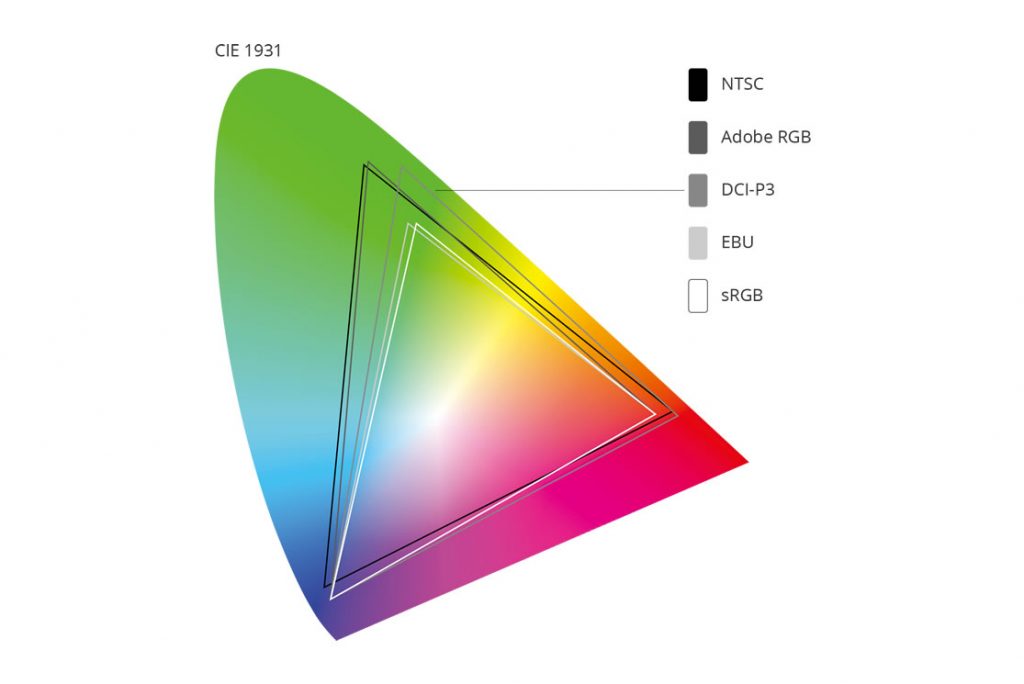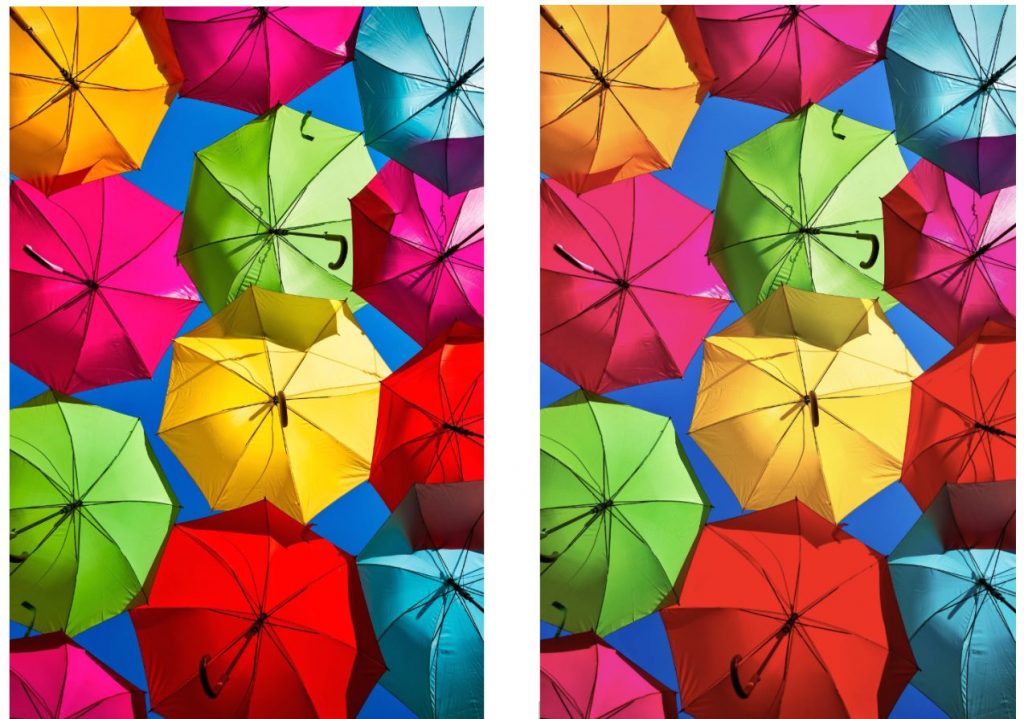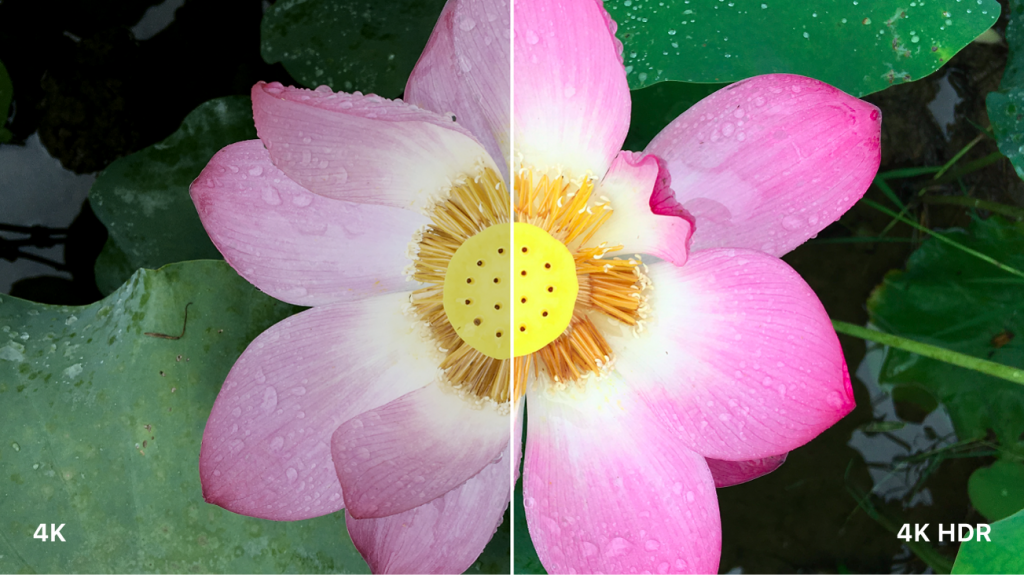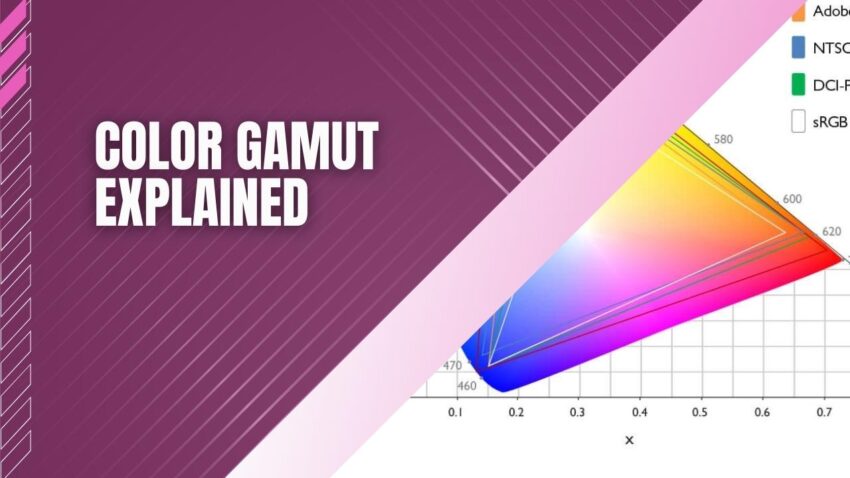
You may want to check out my article on how LCD TVs work to better understand what will be talked about here. Moving on, a color gamut, color space, or color range are a subset of colors that can be produced by a display such as a PC monitor or TVs in this case. It’s important to note that it’s actually the colors they can produce in certain environments.
Similar to how the contrast ratio is determined in a real living room versus a controlled environment, I test the color gamut in a real living room. Though not entirely related, a color gamut or color range could be used to describe a photo that has been printed. It also has a color gamut that is static and unchanging.
Another huge thing to remember is that a purely realistic color range that covers the entire visible spectrum is currently not possible. Engineering hurdles and technological leaps need to be made to realize this goal. With that being said there are tons of different color gamuts with different uses. The most common is the RGB color gamut. This is good to remember as with different gamuts there are different areas that will be covered by those same gamuts. The RGB can produce a very close to pure red color while the CMYK gamut cannot.
To express this further I’ve listed many of the color gamuts below and their uses.
Different Color Gamuts
- RBG: RGB stores individual values for red, green and blue. RGBA is RGB with an additional channel, alpha, to indicate transparency. (Common color spaces based on the RGB model include sRGB, Adobe RGB, ProPhoto RGB, RGB, and CIE RGB.)
- CMYK: stores ink values for cyan, magenta, yellow and black. There are many CMYK color spaces for different sets of inks, substrates, and press characteristics (which change the dot gain or transfer function for each ink and thus change the appearance).
- YIQ: Formally the NTSC, this system stores a luma value roughly analogous to (and sometimes incorrectly identified as) luminance, along with two chroma values as approximate representations of the relative amounts of blue and red in the color.
- YPbPr: Similar to YIQ. It is most commonly seen in digital work.
- YCbCr: Widely in video and image compression schemes such as MPEG and JPEG.
- xvYCC: A new international digital video color space standard. Similar to Rec.709, but a little larger.
- HSV: (hue, saturation, value) Often used by artists because it is often more natural to think about a color in terms of hue and saturation than in terms of additive or subtractive color components.
- TSL: (Tint, Saturation, and Luminance) Mostly used for face detection.
DCI-P3 A common RGB color space for digital projection. Think of this as a standard that most TVs should have every time the TV is tested. - Rec. 709: Most commonly known by the abbreviation BT.709. Holds the format of high-definition television.
- Rec. 2024: Most commonly known by the abbreviation BT.2020. Holds various aspects of ultra-high-definition television (UHDTV) with a standard dynamic range (SDR) and wider color gamuts (WCG).
Though there are many different color gamuts with their many uses, the ones we will focus on are the DCI-P3, Rec. 709, and Rec. 2024 color gamuts.
How to Test Color Gamut

A color gamut is measured using a saturation sweep that samples six main colors that stress the display or TV’s ability to produce those same six colors. The six colors are red, green, blue, cyan, magenta, and yellow. Then those same six colors are tested at five saturation levels which are 20%, 40%, 60%, 80%, and 100%. By doing this it allows for a thorough test that will provide accurate and realistic information.
After a good test on a good TV, you should expect the colors range to look like the following:
hue-saturation-trt
- DCI-P3xy > 90%
- DCI-P3uv > 90%
- Rec. 2024xy > 90%
- Rec. 2024uv > 90%
Anything less than the above scores means the color gamut of the TV is lacking. Though a little under the preferred scores are alright, too far under and you will have some noticeable color range issues.
Wide Color Gamut

Color GamutRec. 2024 defines two resolutions of 3840 × 2160 (4K) and 7680 × 4320 (8K). Though, primarily I will only worry about the gamut of a 4K quality test as TVs are not readily available with 8K quality.
Rec. 2024 also specifies the following frame rates: 120p, 119.88p, 100p, 60p, 59.94p, 50p, 30p, 29.97p, 25p, 24p, 23.976p. This is important to remember as color gamuts that are not wide do not specify frame rates that are over 60 frames. You are covering much more ground here if the TV can produce a color range this large.
Similar to the RGB and the CMYK color gamuts I spoke about earlier, the Rec. 2024 contains colors that the Rec. 709 color gamut cannot produce. Since most TVs can produce most of the Rec. 709 color gamut, testing the Rec. 2024 gamut is a much better test that will produce more tangible results.
The primary use of the wide-color gamut is for HDR content that required more resources to not only look well but also run smoothly. Many Blu-Ray movies are coming to HDR-ready and many streaming platforms are producing HDR-ready content as well. Having the necessary tools ahead of the curve means adding life to the life cycle of your TV. Though often overlooked, that’s always a good thing.
Some of the most popular TVs right now actually have a wide-color gamut if you are interested. Such as the Sony X900F, LG B6, and the Samsung KS8000. Check out these TVs if a wider color range is important to you.
Popular TVs with Wide Color Gamut
Many TVs now come with a wide color gamut, which allows for a wider range of colors and a more realistic viewing experience. Here are some popular TVs with a wide color gamut:
- Sony X900E: This 4K TV has a wide color gamut and supports HDR content. It also features a sleek design and a user-friendly interface.
- LG B6: This OLED TV has a wide color gamut and supports HDR content. It features a slim design and produces stunning images with deep blacks and vibrant colors.
- Samsung KS8000: This 4K TV has a wide color gamut and supports HDR content. It features a sleek design and produces bright, vivid colors.
- Vizio P-Series: This 4K TV has a wide color gamut and supports HDR content. It also features a powerful processor and an intuitive smart TV interface.
- TCL 6-Series: This 4K TV has a wide color gamut and supports HDR content. It features a Roku TV interface and produces stunning images with vibrant colors.
These are just a few examples of popular TVs with a wide color gamut. It’s important to research and read reviews before making a purchase to ensure the TV meets your specific needs and preferences.
FAQ
What is the difference between Rec. 709 and Rec. 2024 color gamuts?
Rec. 709 is a standard color gamut used for high-definition television, while Rec. 2024 is a wider color gamut used for ultra-high-definition television with a standard dynamic range (SDR) and wider color gamuts (WCG). Rec. 2024 contains colors that Rec. 709 cannot produce, making it ideal for HDR content.
Can a TV have multiple color gamuts?
Yes, a TV can have multiple color gamuts, as different color gamuts can be used for different types of content or in different environments. Some TVs may also have the ability to switch between different color gamuts depending on the user’s preferences.
Can the color gamut of a TV be calibrated?
Yes, the color gamut of a TV can be calibrated to ensure that it is displaying colors accurately and consistently. Professional calibration services are available, but there are also some software tools and settings that can be used to adjust the color gamut of a TV. It is important to note that calibration should be done in a controlled environment with proper equipment for accurate results.
Can a wider color gamut improve gaming performance?
A wider color gamut itself does not improve gaming performance, but it can enhance the overall visual experience of gaming by providing more realistic and vibrant colors. However, a TV with a wider color gamut may require more resources to process HDR content, which could impact gaming performance if the TV is not equipped to handle it.
Is a wider color gamut always better?
While a wider color gamut can provide a more realistic and vibrant viewing experience, it is not always necessary or desirable for all types of content or in all environments. In some cases, a standard color gamut may be more suitable or practical. It ultimately depends on the specific needs and preferences of the user.
Conclusion
A color gamut can be very basic and small while at the same time very large and complex. Very simple tests can be run to find the best results of your TVs color gamuts. Though I prefer to test only the DCI-P3 and the Rec.2020 color spaces, you can go ahead and test any and all that you see fit. Remember though a color gamut that you test may be lacking, that does not mean it is bad.
Hope this helps iron out some of the kinks with the color gamut.
Related Posts:
- Ultimate Guide to Get Better Viewing Angle Explained…
- 24p Playback Explained - 2024 Guide for Film Enthusiasts
- TV Motion Rate Explained - Your Guide to Smooth Viewing
- Local Dimming on TVs Explained - Ultimate Guide to…
- Input Lag Explained - Demystifying and Unlocking…
- The Ultimate Guide to Rear Projection TVs 2024 -…








